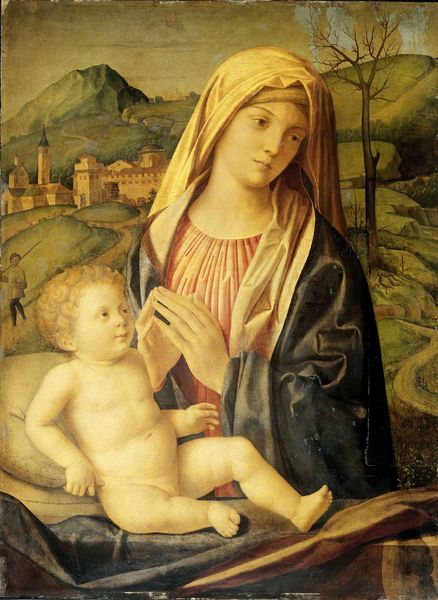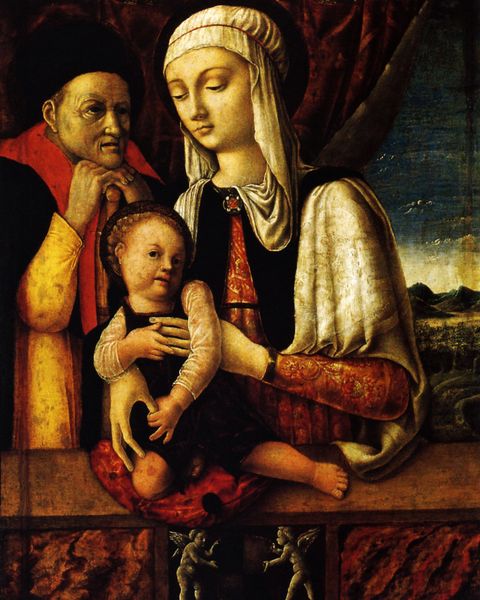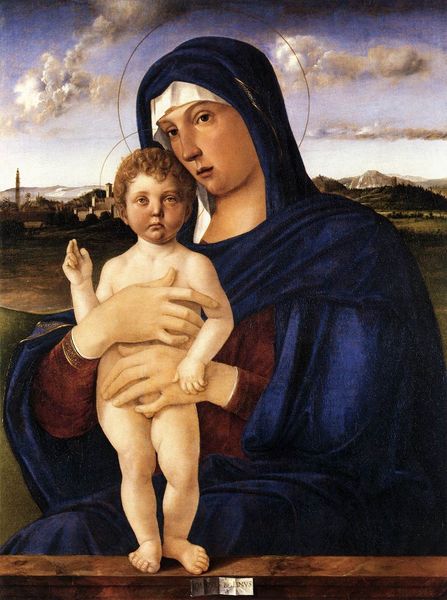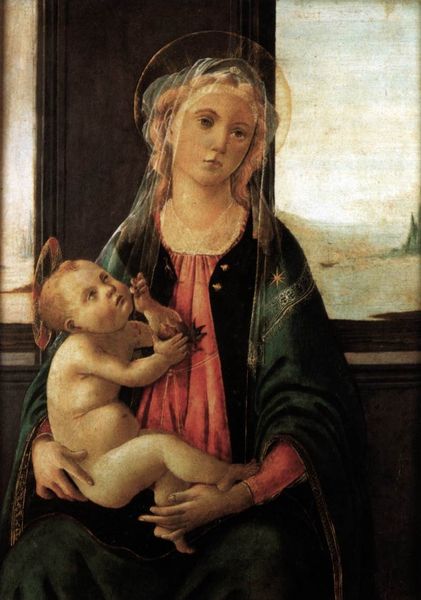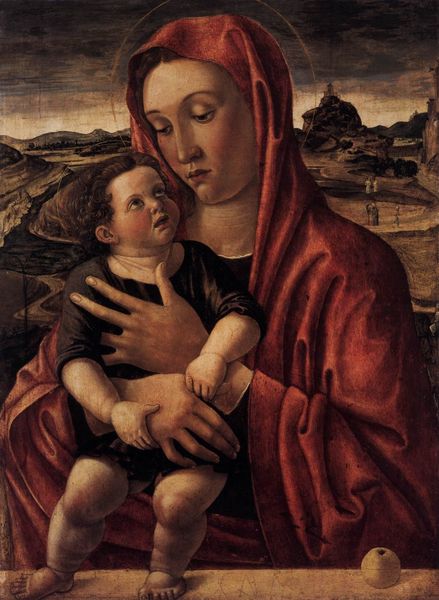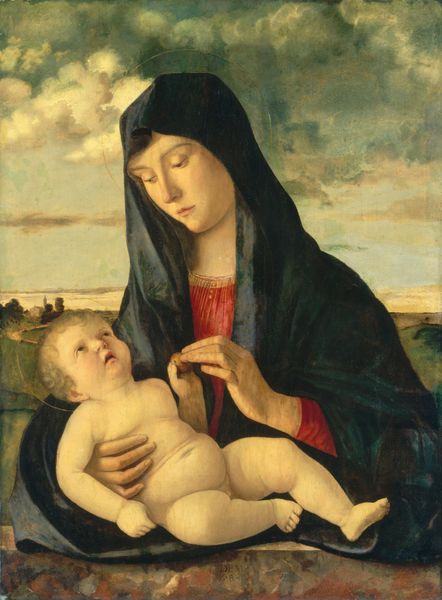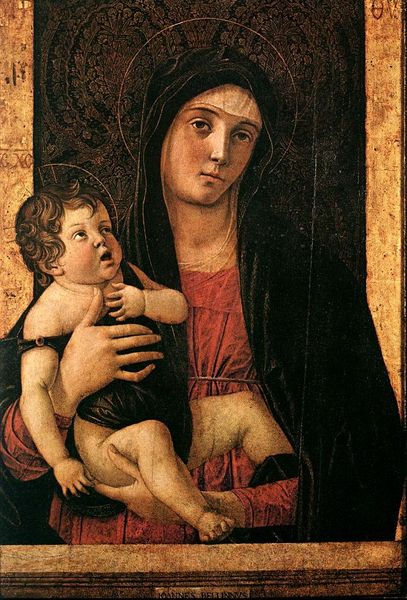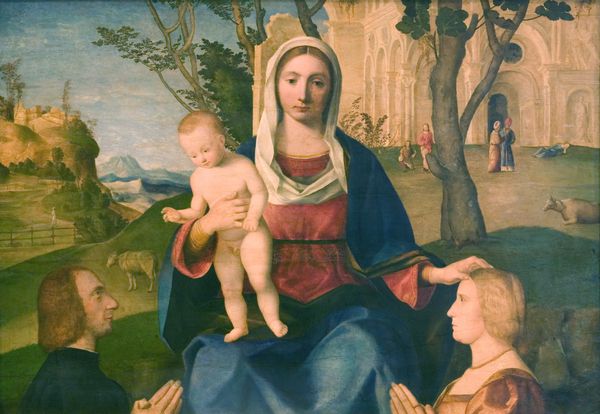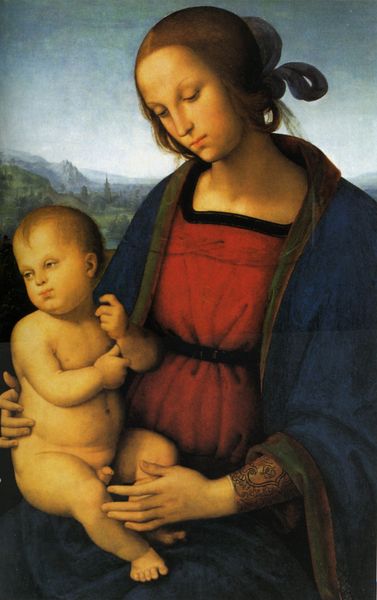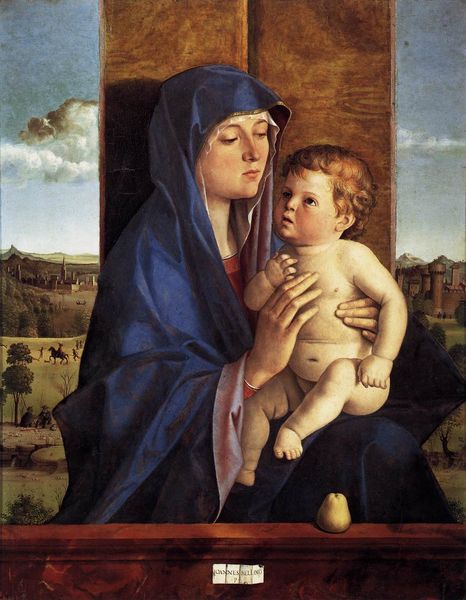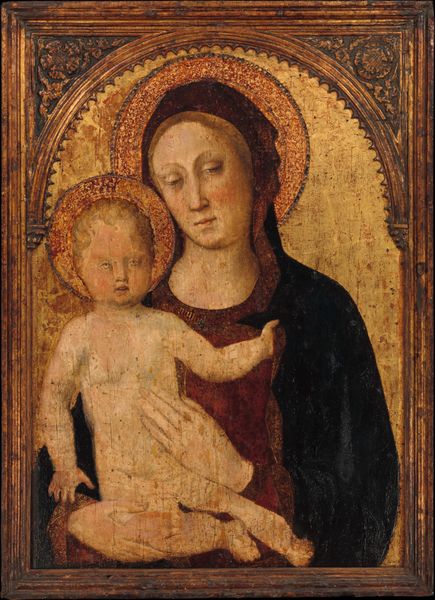
Madonna Adoring the Christ Child c. 1480s
0:00
0:00
painting, oil-paint
#
portrait
#
painting
#
oil-paint
#
figuration
#
oil painting
#
italian-renaissance
#
portrait art
Dimensions: 32 x 23 1/2 in. (81.28 x 59.69 cm) (panel)
Copyright: Public Domain
This panel painting of the Madonna and Child was made by the circle of Lazzaro Bastiani in Venice, around 1500. It depicts a serene Madonna gazing down at the infant Christ. Paintings like this one were devotional objects, common in homes of the rising merchant class of Venice. We can see here a trend for more intimate, domestic portrayals of holy figures. The artist’s workshop was a critical institution for artistic production. Workshops like Bastiani’s produced paintings on a kind of assembly line, with each member contributing their skills. Paintings of the Madonna and Child were incredibly popular, so we can imagine this workshop was a busy place! Art historians rely on archival documents, workshop records, and stylistic analysis to understand these paintings better. The meaning of art is always intertwined with the social and institutional context in which it was made.
Comments
minneapolisinstituteofart about 2 years ago
⋮
The Virgin Mary is depicted in solemn prayer, looking down at her infant son. The Christ Child prostrate position on a parapet in the foreground is a reminder of his future martyrdom. This painting copies a work by the Venetian painter Lazzaro Bastiani that is now in the Poznan National Museum, Poland, although a simpler landscape background has been substituted in the Minneapolis panel for scenes from the life of Tobias which appeared in the background of the original. There are at least three copies of Bastiani's painting known, perhaps by different hands, but all with the same background that appears here (Minneapolis Institute of Art and two works formerly in the New York collections of Paul Dray and Edgar Speyer). So exacting are the replicas, in both the details of the holy figures and setting, that it seems likely that the copyists were members of Bastiani's workshop or circle, and had access to a full-scale cartoon to replicate the master's painting. Pounce marks (or "spolveri") which were used to transfer a design from a cartoon to a painting's surface, can be detected, in fact, in the outline of the Virgin Mary's fingers and Christ Child's legs and toes. We are grateful to the scholar Nicole De Manincor for claryifying the versions and history of this picture.
Join the conversation
Join millions of artists and users on Artera today and experience the ultimate creative platform.
